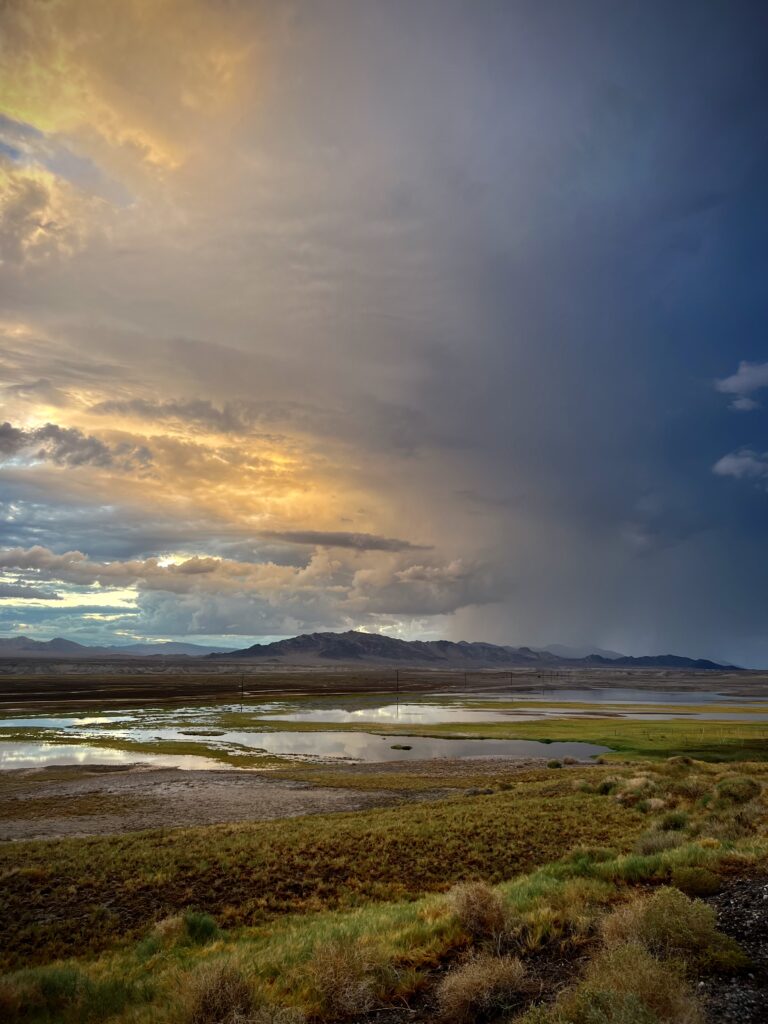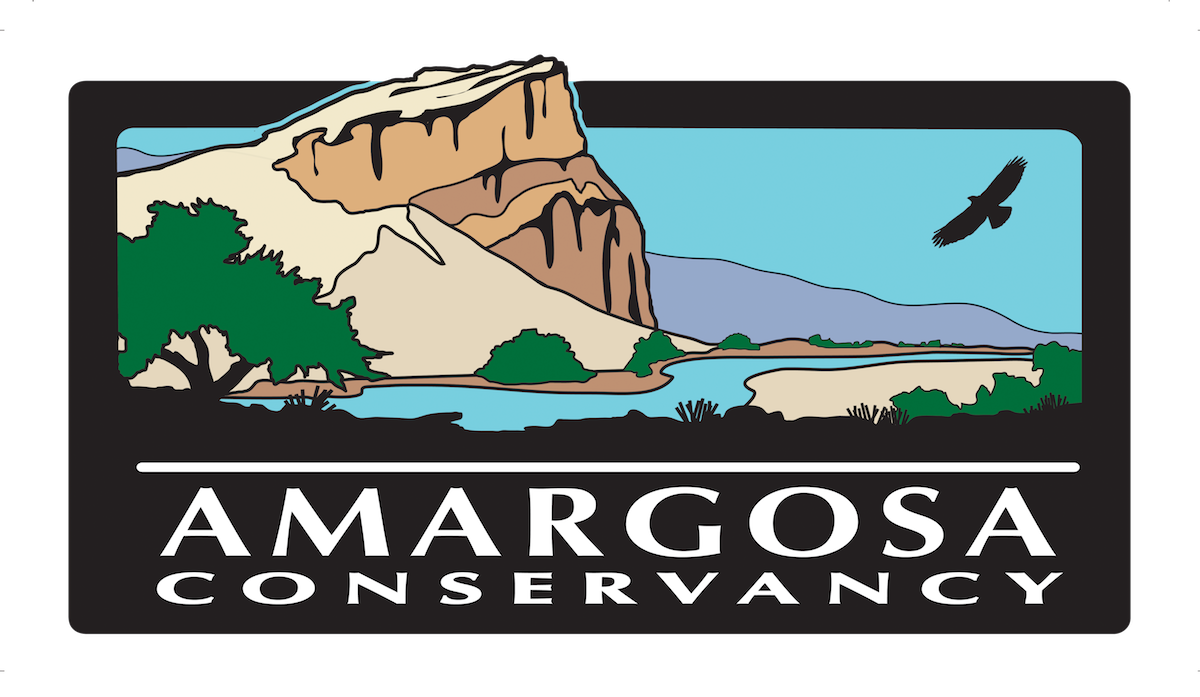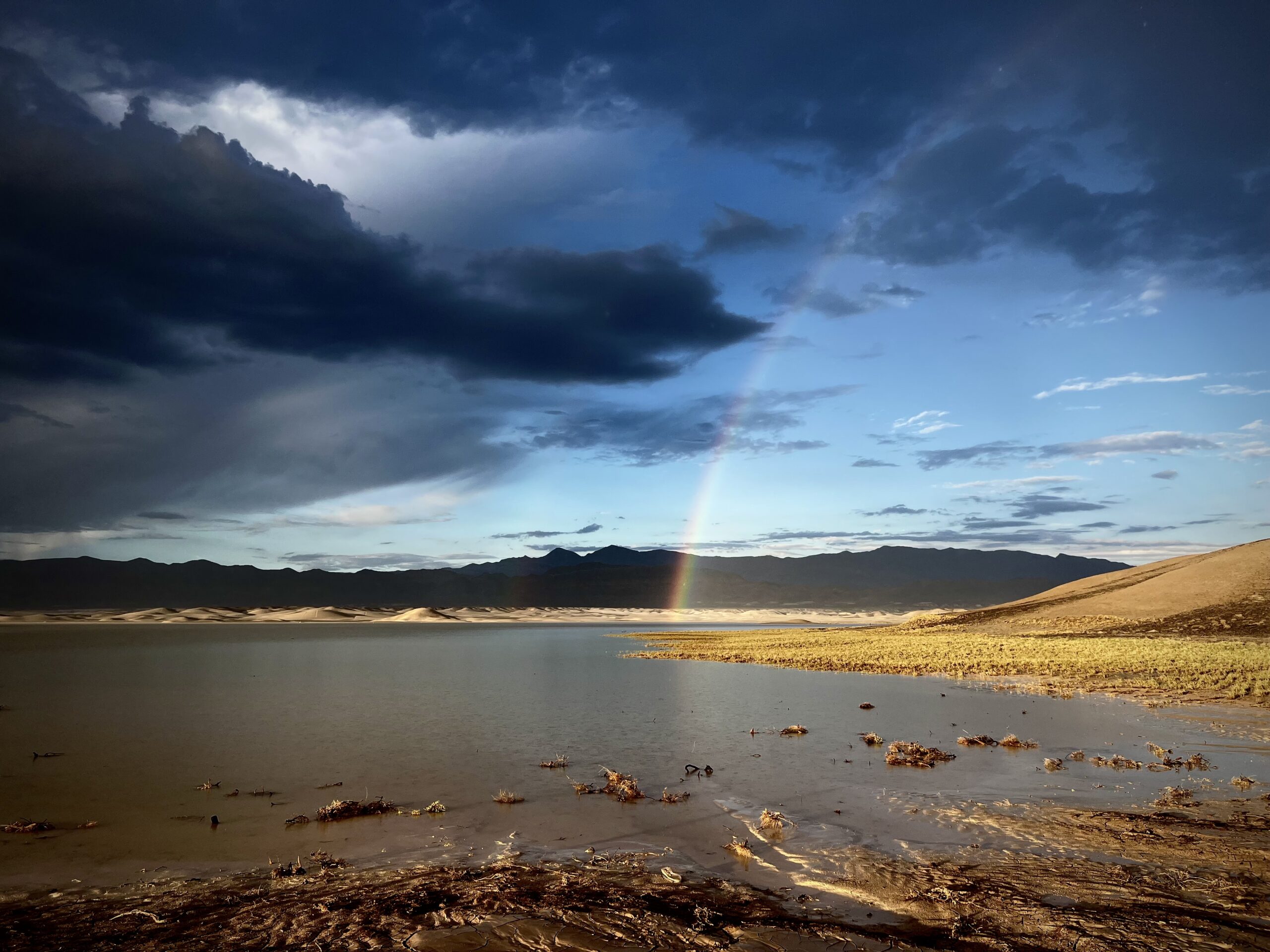Rainbow over Ancient Lake Tecopa
By Executive Director, Mason Voehl
It is truly difficult to articulate just what this monsoon season has been like in the Mojave Desert.
The last few years have been rough on the Amargosa Basin and the southwest as a whole. The drought has felt endless, and punishing. Towards the end of last winter, the effects of the drought were painfully noticeable in the brittleness of the creosote leaves, and the cracked and windswept hardpan on the playas. The terrifying thoughts that it may just get worse, that the drought may extend forever and throttle life in this region even harder were at moments difficult to suppress.
Then July came, and the fabled monsoon rains with it. And everything changed.
The monsoon was not timid in its arrival. It didn’t just rain. On several days over the last few months, the skies were wrought open and water fell in sheets. Parts of Death Valley National Park, Joshua Tree National Park, and the Mojave National Preserve witnessed once in a thousand year downpours, causing washes to flow like rivers. The destruction to the parks’ infrastructure has been staggering, and their staff and affiliated work crews deserve a great deal of thanks from the public for securing the parks and setting to reopening major thruways. But it will take years and millions of dollars to repair what the floods destroyed.

Rain sweeping over Shoshone, CA
Regrettable though that may be, I find it important to remember that flooding is part of this place, and has been for millennia. Desert floods are natural succession events that shape both the landscape and the wildlife in distinct and important ways. Following the floods in Death Valley which swept away the popular Salt Creek boardwalk, the Salt Creek pupfish went into a breeding frenzy. Floods cause a flurry of biological activity, in part because they are enormous disturbances that send many species into “breed like your species depends on it” mode. But floods also move nutrients around in the desert, bringing them from high places to low places and reinvigorating habitat as a result. Genetic research has even revealed that some species of pupfish, dace, and even voles are likely to have “surfed” flood waters down stream, settling them into new pockets of habitat. We still have a great deal to study and understand about the role floods play in ecological succession, but there is no uncertainty about the colossal force of these flood events and their ability to bring changes wherever they flow.
In some respects, we are entering a new era of desert weather research. Climate change appears to be accentuating the extremes of the desert cycle, leading to extended periods of intense drought followed by comparably extreme rain and flooding events. It will likely take some time for us to understand just what this means for the flora and fauna native to these landscapes. Though the rains of 2022 have provided some much needed relief for life in the Amargosa Basin, the extreme patterns of the last few years are worrisome. We’ll need to prepare for the future with knees bent, ready to adapt quickly as needed to what this new age of desert weather brings.
As I reflect on this monsoon season — while, as it happens, staring at my murky reflection in the waters of Ancient Lake Tecopa resurrected by the season’s rains — I’m left with an overwhelming feeling of gratitude. Though the future is uncertain, water from the sky is always a gift. Water brings with it energy, lushness, and vitality. Rain saturates long-dormant seeds, catalyzing growth and blooms. The creosote is green again, and the hardpan turned back to soft mud for now. Simply put, rain gives everything a chance at tomorrow.

